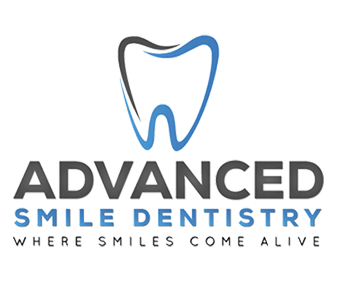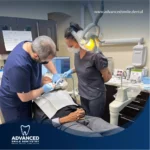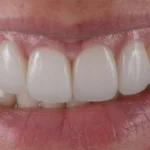What is Sinus Perforation

What is Sinus Perforation?
- Sinus perforation refers to the formation of a hole or opening in the sinus membrane. The sinuses are air-filled spaces located in the bones of the skull, and they are connected to the nasal cavity. The sinus membranes are thin, delicate tissues that separate the sinuses from other structures in the head.
- Sinus perforation can occur as a result of various factors, including trauma, infection, surgery, or dental procedures. It is most commonly associated with dental procedures involving the upper teeth, particularly those located near the maxillary sinuses, which are the largest of the paranasal sinuses.
- When a sinus perforation occurs during a dental procedure, such as a tooth extraction when root is in sinus cavity
, implant placement, or sinus lift surgery, it means that the sinus membrane has been accidentally breached, leading to communication between the oral cavity and the sinus cavity. This can result in the leakage of oral fluids, bacteria, or other contaminants into the sinus cavity. - Sinus perforation can cause symptoms such as pain, swelling, bleeding, nasal congestion, postnasal drip, and sometimes sinus infections. If left untreated, it may lead to more severe complications, including sinusitis (inflammation of the sinuses), abscess formation, or the development of chronic sinus problems.
- Treatment for sinus perforation depends on the size of the perforation and the symptoms present. In some cases, small perforations may heal on their own with conservative management, which may involve antibiotic therapy and precautions to prevent further contamination of the sinus cavity. However, larger or symptomatic perforations may require surgical intervention, such as sinus closure or repair procedures, to seal the opening and promote proper healing.
- If you suspect you have a sinus perforation or are experiencing symptoms related to a recent dental procedure, it’s important to consult with a healthcare professional or your dentist for an accurate diagnosis and appropriate treatment.
Nasal Septum Perforation
Nasal septum perforation refers to the formation of a hole or opening in the nasal septum, which is the wall of cartilage and bone that separates the two nostrils. It is a condition where the nasal septum develops a defect or break, resulting in a communication between the two nasal passages.
Nasal septum perforation can have various causes, including trauma, chronic nasal irritation, nasal surgery, nasal drug abuse (such as cocaine), certain autoimmune conditions, infections, and sometimes as a complication of certain medications. It is important to note that nasal septum perforation is different from sinus perforation, which involves a hole in the sinus membrane.
Symptoms of a nasal septum perforation can vary depending on the size and location of the perforation, as well as individual factors. Some common symptoms may include:
- Nasal congestion: The perforation can disrupt the normal airflow through the nasal passages, leading to nasal congestion or difficulty breathing through the nose.
- Whistling or hissing sound: Air passing through the perforation may create an audible sound, such as a whistle or hiss.
- Epistaxis: The presence of a perforation can increase the risk of nosebleeds (epistaxis) due to the exposed blood vessels in the septum.
- Nasal crusting: The exposed nasal septum can become dry, leading to the formation of crusts or scabs inside the nose.
- Alterations in smell: Some individuals may experience a change in their sense of smell, either a reduced ability to detect odors or a distorted perception of smells.
- Whistle-shaped nasal deformity: In some cases, a large perforation can cause the nasal septum to collapse, resulting in a characteristic “whistle-shaped” deformity of the nose.
Regarding the mention of tooth extraction, it’s important to note that nasal septum perforation is not directly related to tooth extractions.
However, complications during dental procedures, such as a perforated sinus, can potentially lead to nasal septum perforation if there is accidental communication between the oral cavity and the nasal passages.
If you are experiencing symptoms of a perforated sinus after a tooth extraction, it is crucial to seek immediate medical attention. Symptoms may include persistent pain, swelling, discharge from the nose, difficulty breathing, or signs of infection, such as fever or increased facial swelling.
Prompt evaluation and management by a healthcare professional or an oral and maxillofacial surgeon are necessary to address the perforation and prevent further complications.
Please note that this information is not a substitute for medical advice. If you have concerns about a nasal septum perforation or symptoms after a tooth extraction, it is recommended to consult with a healthcare professional for an accurate diagnosis and appropriate treatment.
What are the differences between “Nasal Septum Perforation” and “Sinus Perforation”?
There are important distinctions between them:
- Location: Nasal septum perforation occurs in the nasal septum, which is the cartilage and bone partition that separates the two nostrils. Sinus perforation, on the other hand, refers to a hole or breach in the sinus membrane, which is the thin tissue that lines the sinuses.
- Function: The nasal septum plays a role in dividing the nasal cavity into two distinct passages and provides structural support to the nose. In contrast, the sinuses are air-filled spaces located within the skull bones that are connected to the nasal cavity. They help humidify and filter the air we breathe and contribute to the resonance of the voice.
- Causes: Nasal septum perforation can occur due to various factors, including trauma, chronic nasal irritation, nasal drug abuse, infections, autoimmune conditions, and certain medications. Sinus perforation, on the other hand, is often associated with dental procedures, such as tooth extractions, implant placement, or sinus lift surgery, particularly in the proximity of the maxillary sinuses.
- Symptoms: Nasal septum perforation can present with symptoms such as nasal congestion, whistling or hissing sounds during breathing, epistaxis (nosebleeds), nasal crusting, and alterations in smell. Sinus perforation can cause symptoms such as pain, swelling, bleeding, nasal congestion, postnasal drip, and potentially sinus infections.
- Management: The management of nasal septum perforation and sinus perforation differs. Nasal septum perforation may be managed conservatively with measures such as nasal saline rinses, moisturizing nasal sprays, or surgical interventions like nasal septal repair. Sinus perforation, depending on its size and symptoms, may require surgical repair or closure procedures to seal the opening and prevent complications.
It’s important to note that both conditions require proper evaluation by healthcare professionals, and the appropriate treatment approach will depend on the individual circumstances and severity of the perforation.
We welcome you to the advanced smile dentistry family with our professional staff and state-of-the-art equipment. Please contact us for free consultation and services.





